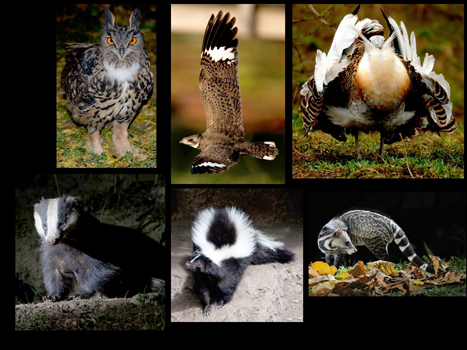For many years, it was believed that bird and mammal communication ‘in the dark of the night' relied exclusively on vocal and chemical signalling. However, in recent decades, several case studies have conveyed the idea that the nocturnal world is rich in visual information. Achromatic patches of feathers and fur on a dark background have the potential to be used to communicate with conspecifics and heterospecifics in dim light across different contexts and for a variety of reasons. Here: (i) we review current knowledge on visual signalling in crepuscular and nocturnal birds and mammals is reviewed; and (ii) some possible cases of birds and mammals that, for the characteristics of their feather and fur patterns of coloration, might use visual signals in dim light are also presented. Visual signalling in nocturnal animals is still an emerging field and, to date, it has received less attention than many other means of communication, including visual communication under daylight. For this reason, many questions remain unanswered and, sometimes, even unasked. informacion[at]ebd.csic.es: Penteriani & Delgado (2017) Living in the dark does not mean a blind life: bird and mammal visual communication in dim light. Philos Trans R Soc B DOI: 10.1098/rstb.2016.0064
http://rstb.royalsocietypublishing.org/content/372/1717/20160064

 Las altas temperaturas están provocando que las lagunas y las marismas de Doñana pierdan agua rápidamente
Las altas temperaturas están provocando que las lagunas y las marismas de Doñana pierdan agua rápidamente




